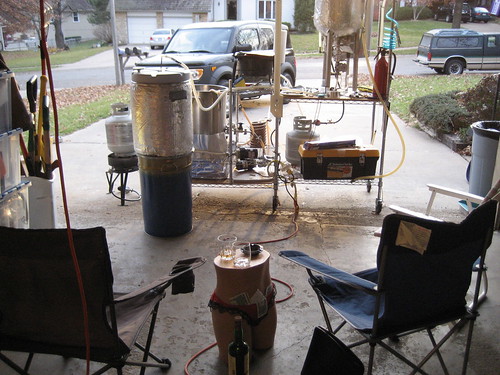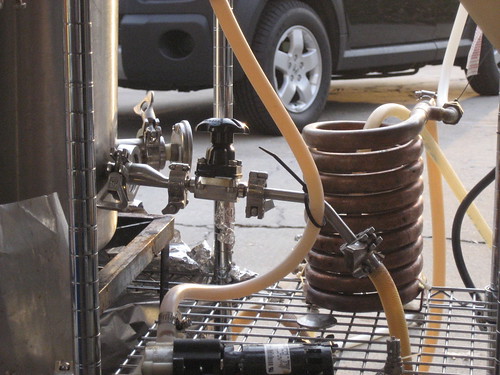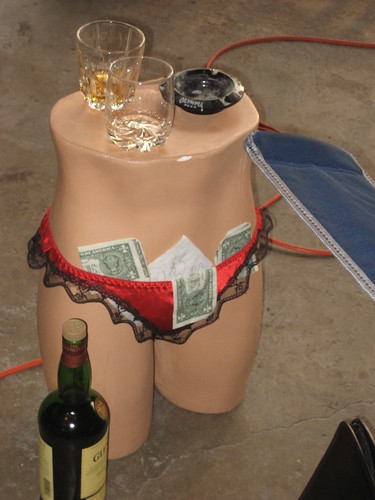My Mocha Imperial Stout and Scottish 90 Ale are on tap and delicious. (My "Scottish 90" is just slightly stronger than an 80, hence the name). The Stout has a very complex taste profile. Or at least that's what some homebrewing buddies and a few "red wine snobs" have told me. I just know that I like it a lot. The Scottish has exquisite mouthfeel and flavor. Both of these brews are exceptionally tasty. I limit myself to up to one 12-ounce glass per day, to prevent "self-mummification."
The high-gravity Sticke Kölschbier turned-out okay. It's a good beer in its own right, but not one that I'd drink on a regular basis. I guess I'm more a fan of the taste of a normal-gravity Kölsch-style ale, with it's inherent clean/crisp body and taste, and the resultant refreshing quality of that style.
The hoppiness of my Harvest IPA has finally settled-down somewhat. It's not so much of a hoppy punch in the face (when you take your first sip), anymore. It's a beer that I'll have one small glass of, (maybe) once per week, using it mainly as an aperitif. My buddies drink the sh*t out of it, though. I guess I only like real hoppy ales in the Summer.
On November 24th, I brewed what I call a Winter Saison, with a starting gravity of 1.074 / 18 degrees Plato. I used two yeast varieties. One home-slanted variety that I've used before, and an actual wine yeast, namely Wyeast Bordeaux. They are still very active, even though I've transferred to secondary fermentation. At the time of the transfer, the gravity had been reduced to a specific gravity of 1.032 (or 8 degrees Plato).
After the transfer to secondary fermentation, In the Belgian tradition, I rejuevenated the yeast somewhat by raising the temperature of the fermentation vessel over the course of two days, from 20 to 24.5 degrees Celsius. The fermentation has now resumed a more vigorous state of activity. I can honestly say that I'm excited about having a Belgian on tap, once again. I'm still looking at 3 more weeks or so until I can taste it, though. What a good way to usher the New Year in!
The grain profile of the recipe was different from most of the Saisons I've brewed in the past. The grain bill consisted mainly of Maris Otter British pale as the main ingredient. Smaller quantities of the following malts were used: Weyerman Munich, Weyermann Rye Malt, Weyermann Vienna Malt, Simpson Crystal 75, and a "skosh" of Castle Aromatic Malt. The color is close to 16 HCU (~10 SRM). At the end of the boil, I included the zest of 1.5 large Navel oranges, and the zest of 1 small white grapefruit. Black Malabar pepper and Grains of Paradise were also added. IBU was 27, and I used Styrian Goldings and Saaz hops.
The brew day became quite the neighborhood gathering. By the end of the boil, 8 people were still there, talking so loudly that I thought the other neighbors might complain.
Brew Day Photos:

Brew Day Setup, aka "White Trash Theater"

A closeup of my hodgepodge, homemade & amateur-welded equipment.

Lovely Roxy, the "Perfect Woman" for Brew Day.
She loves cigars and strong drink, (and the occasional tip or IOU).
Trudy Nepstad contributed this to my garage brewery about 5 years ago.
Thanks, Trudy!


No comments:
Post a Comment